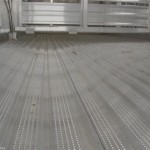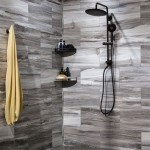LVP vs. Laminate Flooring: A Comprehensive Comparison
Choosing the right flooring for a home renovation or new construction project can be a daunting task. Numerous materials are available, each with its own set of advantages and disadvantages. Among the most popular choices for budget-conscious homeowners are Luxury Vinyl Plank (LVP) and Laminate flooring. While both offer appealing aesthetics and relatively easy installation, their composition, performance characteristics, and applications differ significantly. A thorough understanding of these differences is crucial for making an informed decision that aligns with specific needs and priorities.
LVP and Laminate flooring both aim to mimic the look of natural materials like hardwood, stone, or tile. However, the way they achieve this, and the materials they are made from, is where the differences begin. Laminate flooring is a multi-layer synthetic product. It consists primarily of a high-density fiberboard (HDF) core, onto which a decorative photographic layer is applied. This layer is then covered with a clear, protective wear layer. The construction of laminate makes it relatively rigid and typically installed as a floating floor, meaning it is not directly adhered to the subfloor. Instead, it relies on an interlocking system.
LVP, on the other hand, is composed of multiple layers of polyvinyl chloride (PVC) plastic. This construction gives LVP inherent water resistance and flexibility. LVP often includes a wear layer, a decorative printed layer, and a backing layer. The wear layer’s thickness is a critical factor in determining the durability and longevity of the flooring. LVP is available in various installation methods, including glue-down, click-lock, and loose-lay, offering greater versatility in different applications.
Understanding the Key Differences in Material Composition
The fundamental difference between LVP and laminate lies in their core material. Laminate utilizes a high-density fiberboard (HDF) core, making it susceptible to water damage. When exposed to moisture for extended periods, the HDF core can swell, warp, and ultimately ruin the flooring. While some laminate products are labeled as "water-resistant," this typically means they can withstand spills that are cleaned up quickly. They are not suitable for areas prone to high moisture, such as bathrooms, laundry rooms, or basements.
LVP's PVC core provides inherent water resistance. This characteristic makes it an ideal choice for moisture-prone areas. The completely synthetic composition of LVP prevents water absorption, mitigating the risk of swelling, warping, or mold growth. Even if standing water is present for an extended period, LVP will not be damaged, making it easier to maintain and a more durable option in demanding environments.
Furthermore, the wear layers differ significantly in their construction and performance. Laminate wear layers are typically made of aluminum oxide, a very hard and durable material. This wear layer provides excellent scratch resistance, making laminate a suitable choice for homes with pets or heavy foot traffic. However, aluminum oxide can sometimes be brittle and prone to chipping under extreme impact.
LVP wear layers are typically made of clear vinyl. The thickness of this layer is measured in mils (thousandths of an inch). A thicker wear layer offers greater protection against scratches, scuffs, and dents. Higher quality LVP products often feature wear layers between 12 and 20 mils, providing excellent durability. While LVP wear layers may not be as scratch-resistant as aluminum oxide, they are generally more resilient to impact and less prone to chipping.
Assessing Durability and Maintenance Requirements
Both LVP and laminate flooring offer reasonable durability when properly maintained. However, their strengths and weaknesses differ based on their construction. Laminate's scratch resistance is a significant advantage, making it well-suited for areas with high foot traffic and pets. However, its susceptibility to water damage is a major drawback, limiting its application in certain areas of the home.
The durability of LVP is primarily determined by the thickness of its wear layer. Thicker wear layers can withstand more abuse and provide better protection against scratches, dents, and stains. LVP is generally more impact-resistant than laminate, making it less prone to chipping. Its water resistance makes it a more durable option in areas prone to moisture, as it won't be damaged by spills or humidity.
Maintenance requirements for both LVP and laminate are relatively straightforward. Regular sweeping or vacuuming is essential to remove dirt and debris. For spills, a damp mop with a mild detergent is usually sufficient. However, it's crucial to avoid excessive water when cleaning laminate, as this can seep into the seams and damage the core. LVP is more forgiving in this regard, as it can withstand more moisture without adverse effects. Steam mops are generally not recommended for either type of flooring.
Repairing damaged sections of laminate or LVP can be challenging. For laminate, replacing a damaged plank often requires disassembling a large portion of the floor, which can be time-consuming and labor-intensive. LVP repairs can sometimes be easier, particularly with click-lock or loose-lay installations, as individual planks can be more readily replaced. However, finding an exact match for the existing flooring can be difficult, especially if the flooring has been discontinued.
Comparing Aesthetics, Installation, and Cost Considerations
Both LVP and laminate flooring offer a wide range of styles and designs, mimicking various natural materials. Advances in printing technology have made it possible to create incredibly realistic visuals, including wood grain patterns, stone textures, and tile designs. The choice between LVP and laminate in terms of aesthetics often comes down to personal preference.
Laminate flooring typically has a more consistent and uniform appearance, while LVP can sometimes offer more variation in plank design, creating a more natural look. LVP also tends to have a slightly softer and warmer feel underfoot compared to laminate, which can feel harder and colder. The texture of the surface can also differ significantly, with some LVP products offering embossed textures that closely resemble the feel of real wood or stone.
Installation of both LVP and laminate is generally considered DIY-friendly, particularly with click-lock systems. However, preparing the subfloor is crucial for both types of flooring. The subfloor must be level, clean, and dry to ensure proper installation and prevent issues such as squeaking or unevenness. Laminate flooring typically requires an underlayment, which provides cushioning, sound insulation, and moisture protection. LVP may or may not require an underlayment, depending on the product and the condition of the subfloor.
The cost of LVP and laminate flooring can vary depending on the quality, brand, and design. Generally, laminate flooring tends to be slightly less expensive than LVP, although this difference has narrowed in recent years. Installation costs can also vary depending on whether the project is DIY or professionally installed. Professional installation can add significantly to the overall cost.
Beyond the initial purchase price, it's important to consider the long-term cost of ownership. LVP's water resistance and durability can translate to lower maintenance and replacement costs over time. While laminate may be cheaper initially, its susceptibility to water damage could lead to costly repairs or replacements in the long run. Therefore, a thorough cost-benefit analysis is essential when deciding between LVP and laminate flooring.
Considerations such as the intended use of the space, the level of foot traffic, the potential for moisture exposure, and the desired aesthetic should all factor into the decision-making process. Consulting with flooring professionals and obtaining samples of both LVP and laminate can also be helpful in making an informed choice.
The choice between LVP and laminate flooring involves weighing the pros and cons of each material in relation to your specific needs and priorities. Both offer attractive and affordable flooring solutions, but their suitability varies depending on the application. Careful consideration of the factors outlined above will help ensure that you select the flooring that best meets your requirements and provides lasting satisfaction.

Laminate Vs Lvp Choose The Ideal Floor Today Reallyfloors America S Est Hardwood Flooring

Vinyl Plank Vs Laminate Flooring Which Is Right For You Onflooring

Hardwood Floors Vs Laminate Luxury Vinyl Plank Lvp Which Should I Use And What Are Buyers Wanting

Vinyl Vs Laminate Flooring 411 Which Is Better

Luxury Vinyl Plank Vs Laminate What S The Difference

Laminate Vs Hardwood Vinyl Flooring 50floor

Lvp Or Laminate Dalton Floor Tailor

Laminate Is Back And Better Than Vinyl Plank Flooring

Laminate Flooring Vs Vinyl Pros And Cons East Coast Interiors

Luxury Vinyl Vs Laminate Flooring Pros And Cons The We Chose Angela Marie Made
Related Posts








